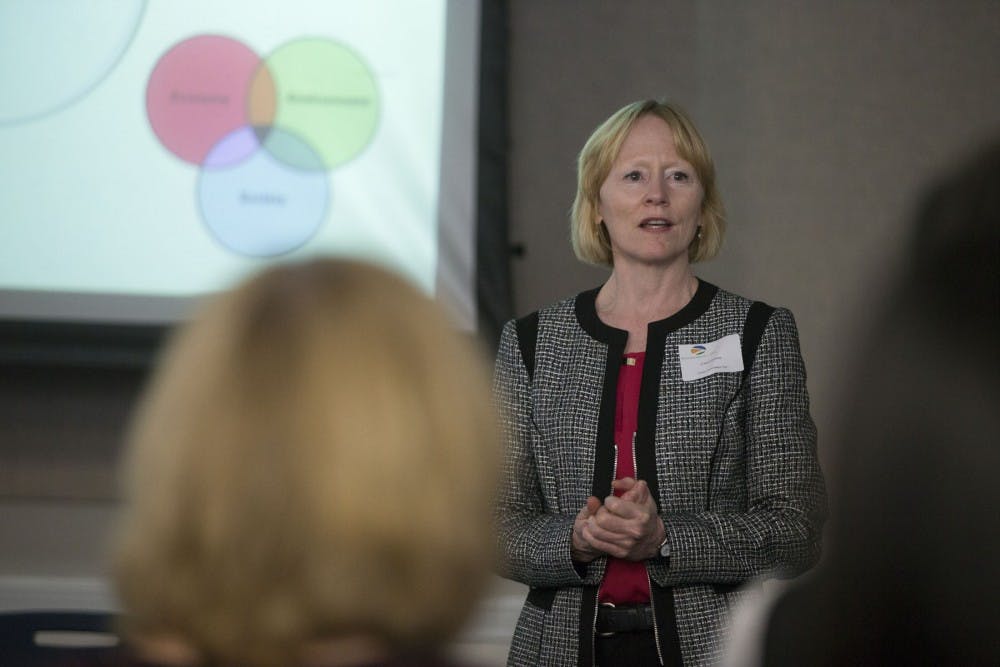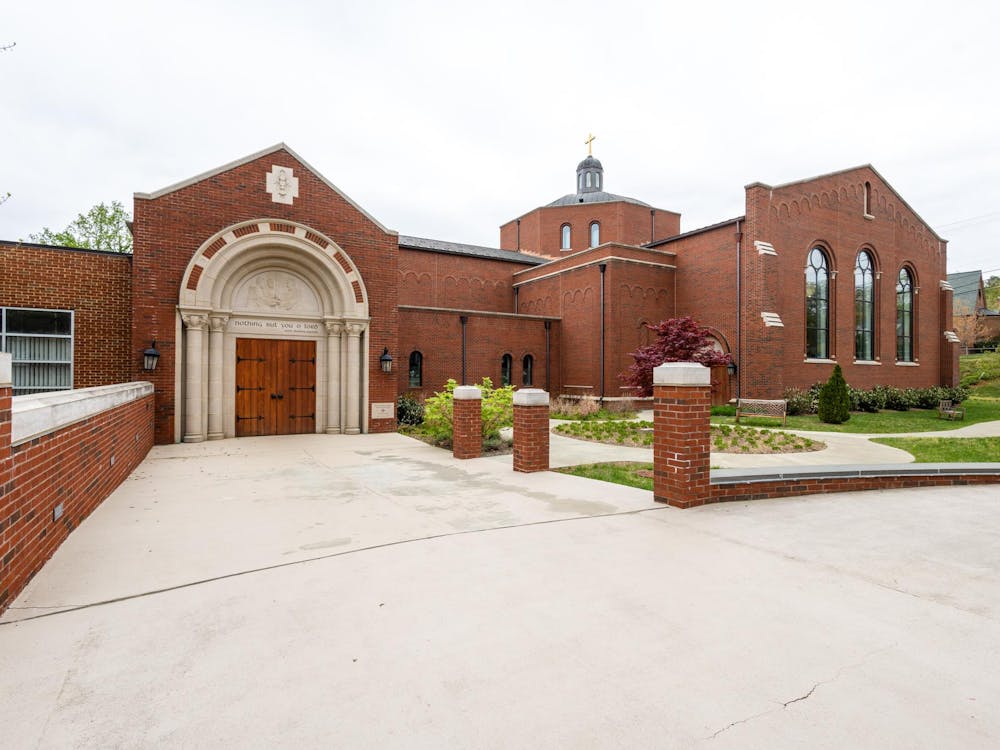The University Committee on Sustainability hosted a celebration of Campus Sustainability Day
Wednesday afternoon as part of its effort to recognize and encourage sustainable environmental practices at the University. Complete with ecologically sustainable refreshments, the event featured presentations by University Architect David Neuma and Cheryl Gomez, director of energy and utilities for facilities management.
In 2011, the Board of Visitors approved a resolution to reduce the University’s carbon emissions. Though the move was an important step for the University, Neuman said the Board’s recent approval of a nitrogen footprint reduction program was more impressive — potentially the first in the country.
Gomez showcased samples of student research at the University, saying the University hosts more than a dozen students every summer to conduct research on the community’s environment. Past projects have included a water pollution project focusing on the Chesapeake Bay and a dynamic model of the University’s thermal distribution system.
“Things like these can really show how individual, personal behavior can reduce your impact on the environment,” Gomez said.
The University’s recycling rate was nearly 50 percent in 2012, and water usage is 25 percent lower than its peak in 1999, Gomez said. If the University had continued using water at its peak rate in 1999, it would cost 1.5 million dollars more per year, she said.
“So a lot of people think of sustainability as something you have to give up,” Gomez said. “This [data] is telling you that it is not something you have to give up. It’s good for the environment, and it’s good for the bottom line. Financially, it’s the right thing to do.”
The presentation also included the new Green Guide, which outlined some of the University’s sustainability plans. Nina Morris, sustainability outreach coordinator in the office of facilities management, said these plans include efforts to make existing University structures more ecologically beneficial. In addition, the University intends to design future buildings, such as dorms, with sustainability in mind.
“Our future goals include that all new buildings and major renovations will be LEED-certified or better, providing students with education on how best to reduce their consumption in their dorms, continue to provide students with easy access to recycling and potentially composting, and encourage students to bike, walk, bus, or carpool to get around Grounds,” Morris said. “ The residence halls also have filtered water bottle refill stations to discourage disposable water bottles as they are not only costly to students, but have a big environmental footprint.”







